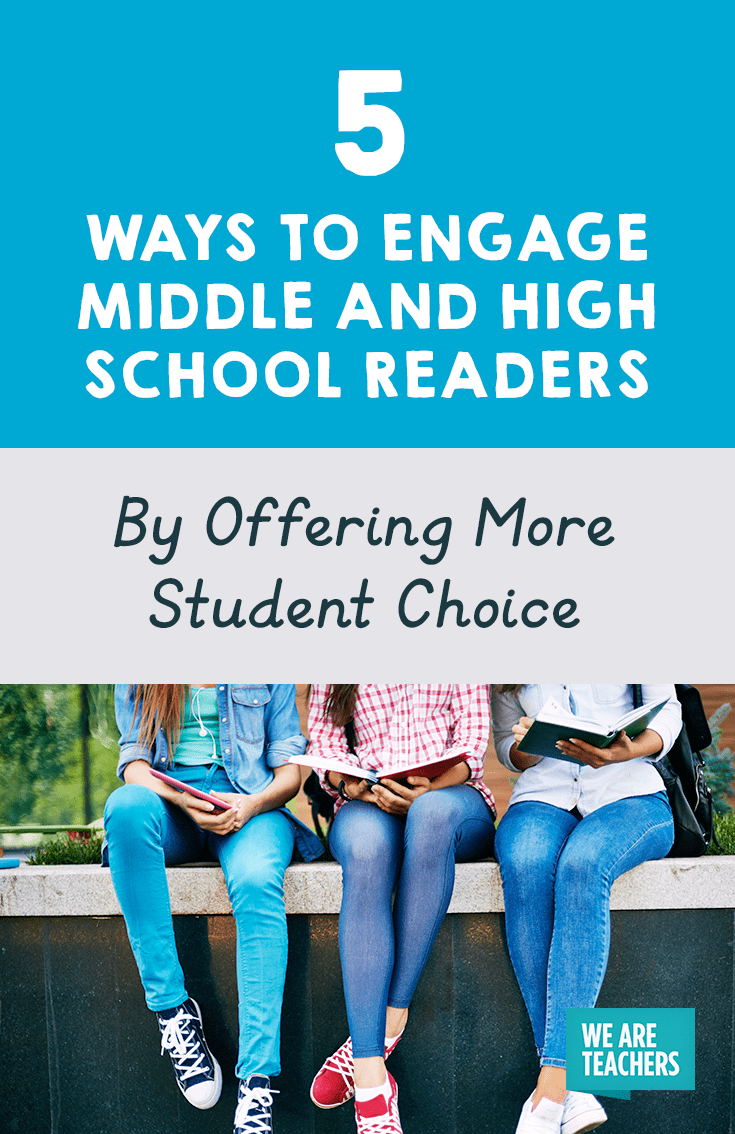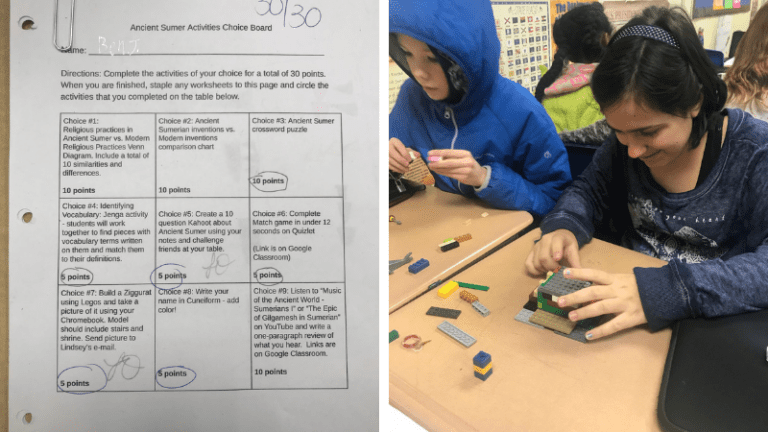I’m a big proponent of student choice in the classroom. Kids have so few opportunities for autonomy in school—at least all the schools where I’ve worked—that any increase in sovereignty yields major payoff in terms of engagement and buy-in.
I let my seventh graders design their entire curriculum at the beginning of the year. I love it; it keeps me on my toes and creates a great classroom community. But if you’re not ready to do that, don’t have the resources or don’t have the freedom, there are still a lot of ways to build choice into your reading curriculum.
1. Provide time for independent reading.
Build in a few minutes at the beginning of class for students to read the book of their choice. This one’s tricky because it’s hard to keep kids accountable without overloading yourself on book reports. I manage this by keeping on top of a few things.
First, I take my kids to the school library every couple of weeks and recommend books to them based on their interests.
There’s always a kid in every class who wants books about war. The girls like drama and, oddly enough, books about foster children. I steer the ones who always talk about horror movies toward Lois Duncan, and the avid gossipers/reluctant readers toward Bluford High.
I’m not organized enough to do formal book talks in class, but I’m great at grabbing one off the library shelf and reading the dust jacket until five kids try to grab it from me.
Second, I check in with the kids. Did Jessica just grab a book off my classroom shelf, flip to page 62 and start staring into space? Time to figure out why and find a book she’ll actually be excited about reading!
Finally, my kids don’t do book reports. Instead, when they finish a book, they meet with me for a book conference. I log the title in my computer (to prevent repeats) and then ask a few questions about the book to determine if they’ve actually read it. This often jump-starts some really good conversations, and it’s easy to grade!
If I can tell they read the book, they get a 100. If I can’t tell they read the book, I ask questions until I figure it out. If they didn’t read it, I send them back until they’ve read a book and are ready to have a book conference.
The best part of in-class independent reading? Research says teachers should use this time to read too, so it’s often the most relaxing part of my day!
2. Try book circles.
I’ll be honest: I struggle with this one. It requires a lot of organization and a lot of walking around the room and checking in, when I would rather be talking with kids about books. But I know a lot of teachers who use it really effectively.
Book circles—in which kids organize themselves into groups based on the book they’ve chosen to read—require a lot of planning up front, but then they more or less manage themselves. And if you need to work in some whole-class instruction, why not offer a choice of several books based around a theme, like dystopian literature, memoir, or race and culture?
3. Allow students to read ahead.
I remember when I read Where the Red Fern Grows in fourth grade. I was so into it, I had those dogs dead and buried within two weeks, while the rest of the class was still in chapter four. But I had to follow along with everybody else to avoid getting in trouble if the teacher called on me to read aloud. Talk about a joy-killer.
In my classroom, I try to have some depth in my reading list. In other words, if a kid finishes a book early, I have a backup ready. Series are great for this. Done with Roll of Thunder, Hear My Cry? Here’s the sequel. You can also do it thematically. Right now, most of my class are reading The Giver, but I’ve got a few working on Brave New World and a couple of gamers reading Orson Scott Card.
4. Put things to a vote.
You’ve got six class sets of novels, why not let the kids vote on what they read next? You can probably hit whatever literacy skills they need with almost any book, so this is a great way to build in some choice.
Also, it’s pretty easy to sway how they vote based on the way you present the books. I like to add in some writing practice by having them write explanations for why they chose their book. A particularly compelling explanation is worth up to three votes, so they’re motivated to be convincing!
5. Tie in nonfiction with fiction.
I’m lucky to have almost complete freedom over my curriculum, but not everybody has that liberty. If your school or district mandates the books you teach, that doesn’t necessarily preclude all student choice. You can still give kids some options in the angle they take on the reading.
For instance, my seventh graders always read The Outsiders, but they don’t always read it the same way. Sometimes we focus on teen violence, and we read articles about gangs and drugs and first-person-shooter video games.
Other times we focus on the idea of being an individual versus the natural desire to fit in. We read articles about the pitfalls of popularity, and we watch TED Talks by loners who achieved amazing things.
This year, we read it through a socioeconomic lens. We read about and discussed the markers of social class, the way upper-class versus working-class parents raise their children, and then we watched Dead Poets Society, which deals with boys of the same age group and time period but different social classes. Let your class’s interests guide the way you study the required texts and you’ll be amazed at how involved and engaged they are.
Building in more student choice takes some planning up front, but it has major payoff in engagement and focus. Autonomy in the classroom is definitely worth the effort!



